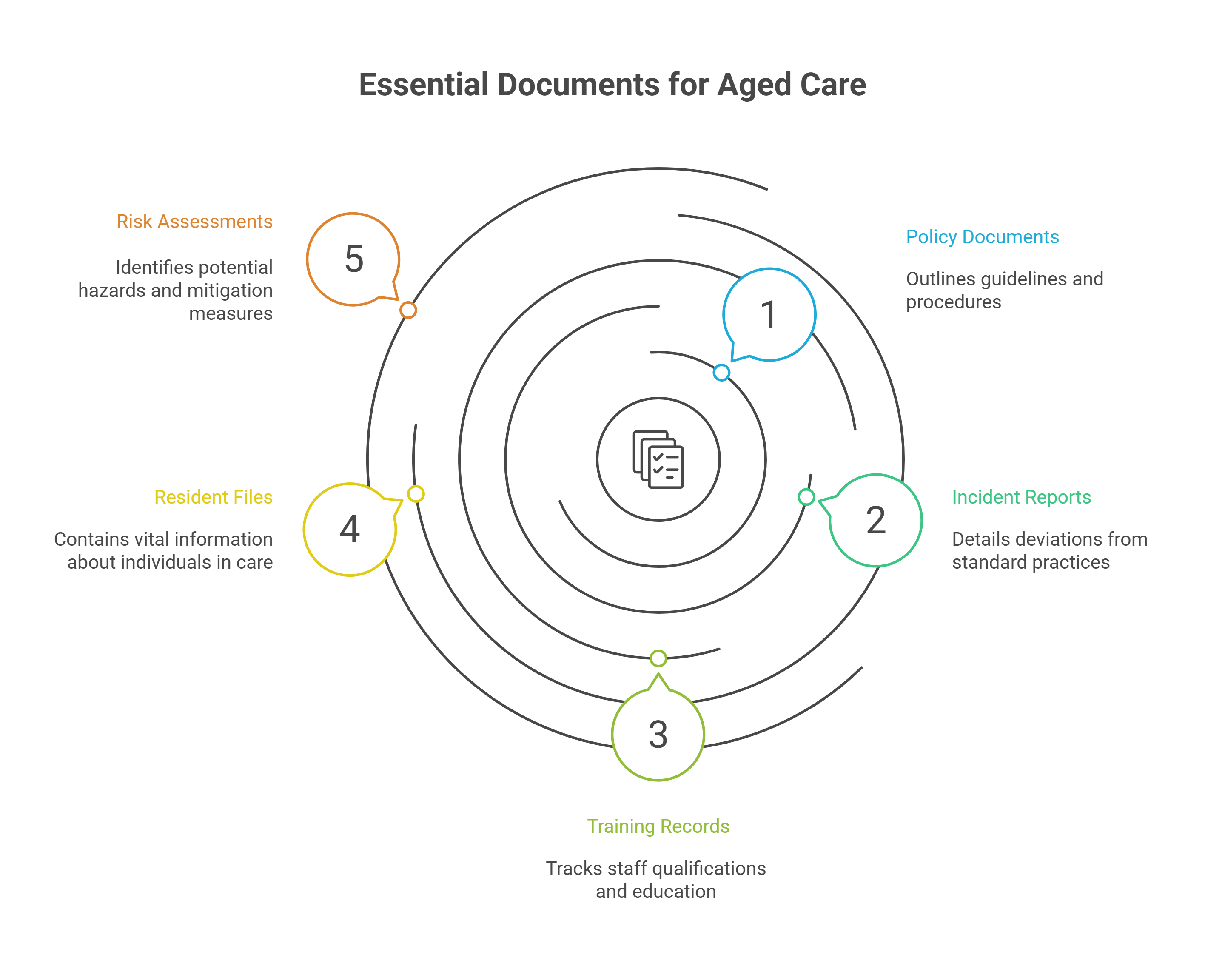When you hear “spot audit,” does your stomach drop just a little? You are not alone. Spot checks in aged care facilities can feel like surprise quizzes in school—except this time, it is not just your grade on the line, it is your compliance record.
That is why your audit preparation should never be left to the last minute. Like a good umbrella, solid policy documentation keeps you covered when the storm hits. With the right systems, up-to-date templates, and a firm grasp of what regulators expect, you will be more than ready.
Whether you are a facility manager, compliance officer, or frontline worker, your policies speak louder than words when auditors come knocking. This guide will walk you through how to prepare and organise your documentation, using the tools available at Governa AI to stay on track.
Why Spot Audits Matter in Aged Care
Spot audits, or unannounced assessments, are a regular part of Australia’s aged care landscape. They help confirm that facilities are meeting standards under the Aged Care Quality Standards.
Auditors can show up without warning and ask to review your:
- Policy documents
- Incident reports
- Training record
- Resident files
- Risk assessments
These checks are serious. If documentation is outdated, incomplete or hard to locate, it can reflect poorly—even if your care is excellent. That is why documented proof is your strongest ally.

Your First Step: Strong Policy Templates
Solid foundations start with reliable templates. When you have consistent, professionally written aged care policy templates, half the battle is already won. Templates help you:
- Maintain consistency across documents
- Meet regulatory language requirements
- Avoid gaps or vague procedures
- Make updates faster when laws change
At Governa AI, you will find aged care policy templates designed specifically for Australian standards. These templates cover care planning, medication handling, infection control, privacy, food safety, and more.
Think of templates as your safety net. They reduce the guesswork and give your documentation the structure auditors want to see.
Audit Preparation Checklist
To stay prepared, treat spot audits as part of your everyday routine. Here is a plainspoken checklist to guide your team:
1. Review Your Current Policy Documents
Make sure your existing policies are:
- Updated with the most recent legislation
- Written in clear, professional language
- Signed off by relevant managers
- Easily accessible to all staff
If any document is older than two years, take a closer look. Regulations shift often in aged care, and out-of-date documents are a red flag during documentation audits.
2. Align Policies with Practice
Aged care staff should be familiar with the procedures in your policies. If your documents say one thing, but staff are doing another, that is a compliance issue.
Do regular walkthroughs with staff and ask:
- “Where do you find this policy?”
- “Can you show me how you follow it in daily work?”
You want consistency between what is written and what is practiced.
3. Organise Your Filing System
Messy filing equals messy audits. Whether you use digital folders or physical binders, good folder management helps auditors get what they need without delay.
Use clear labels such as:
- “Policy Documents – Updated 2025”
- “Incident Reports – Q2 2025”
- “Training Logs – Mandatory Modules”
Separate current documents from archived ones. When an auditor asks for a specific file, you should not have to dig through piles of paper or scroll endlessly.
If you are managing multiple facilities or teams, consider moving to a digital platform like Governa AI to make document filing more reliable.
The Risk of Poor Documentation
Let us not sugarcoat it. If your documentation is weak, even strong care may not save your audit. You could be marked down or even face penalties. Common problems include:
- Missing policies
- Poor formatting
- Inconsistent signatures
- Outdated procedures
- No clear revision history
These issues make it harder to prove compliance. Worse, they might create confusion among staff about what is expected. Good documents remove guesswork and reduce errors.
.png)
How Governa AI Helps You Prepare
At Governa AI, documentation is not just a box to tick—it is a living part of your organisation’s health. Our tools support your audit preparation with:
- Ready-to-use aged care policy templates based on Australian regulations
- Version control so you can track who updated what and whe
- Digital access to your documents in one place
- Collaboration features for team editing and approvals
Everything is designed to help you pass audits and maintain a consistent standard of care.
Visit www.governa.ai/policy-templates to see how our platform fits your facility’s needs.
Training Staff on Audit-Ready Behaviour
Auditors can speak with anyone, not just managers. Every worker should understand how their role connects with policy and compliance.
Talk openly with your team about:
- The importance of documentation
- Where to find policies
- How to respond during spot checks
Use short quizzes, team meetings or checklists to reinforce knowledge. And remember—training should be regular, not just once a year. When everyone knows the drill, audits run smoother.
Tracking and Revising Policies Over Time
It is one thing to write a policy. It is another to keep it alive. You need a routine to:
- Review policies every 6 to 12 months
- Update according to new legislation or care standards
- Record changes with proper version control
Every change should be signed off and dated. Use footers to show version number, approval date and responsible person. This tells auditors you take documentation seriously.
Mock Audits: A Helpful Dry Run
Want to know how ready you are? Try a mock audit.
Have a colleague or external consultant simulate an audit and walk through your systems. This gives you insight into:
- What documents are hard to find
- Which procedures are unclear
- What staff struggle to answer
Fix these gaps now, so they do not catch you off guard later. Think of it as rehearsal before opening night.
.png)
Final Thoughts
Spot audits can feel intimidating, but they are not out to trip you up. They are there to protect residents, improve standards, and make sure aged care is delivered with care and clarity.
With strong policy templates, well-organised folders, and trained staff, you can meet audits with confidence—not panic.
Audit preparation is not a once-a-year event. It is a daily habit of clear writing, regular updates, and good communication.
Ready to Get Your Documents in Shape?
Visit Governa AI’s Policy Templates page to get started with ready-made, editable aged care policy documents written for Australian standards.
Take the guesswork out of audit preparation and give your team the tools to succeed.
Your next spot check? Bring it on.










